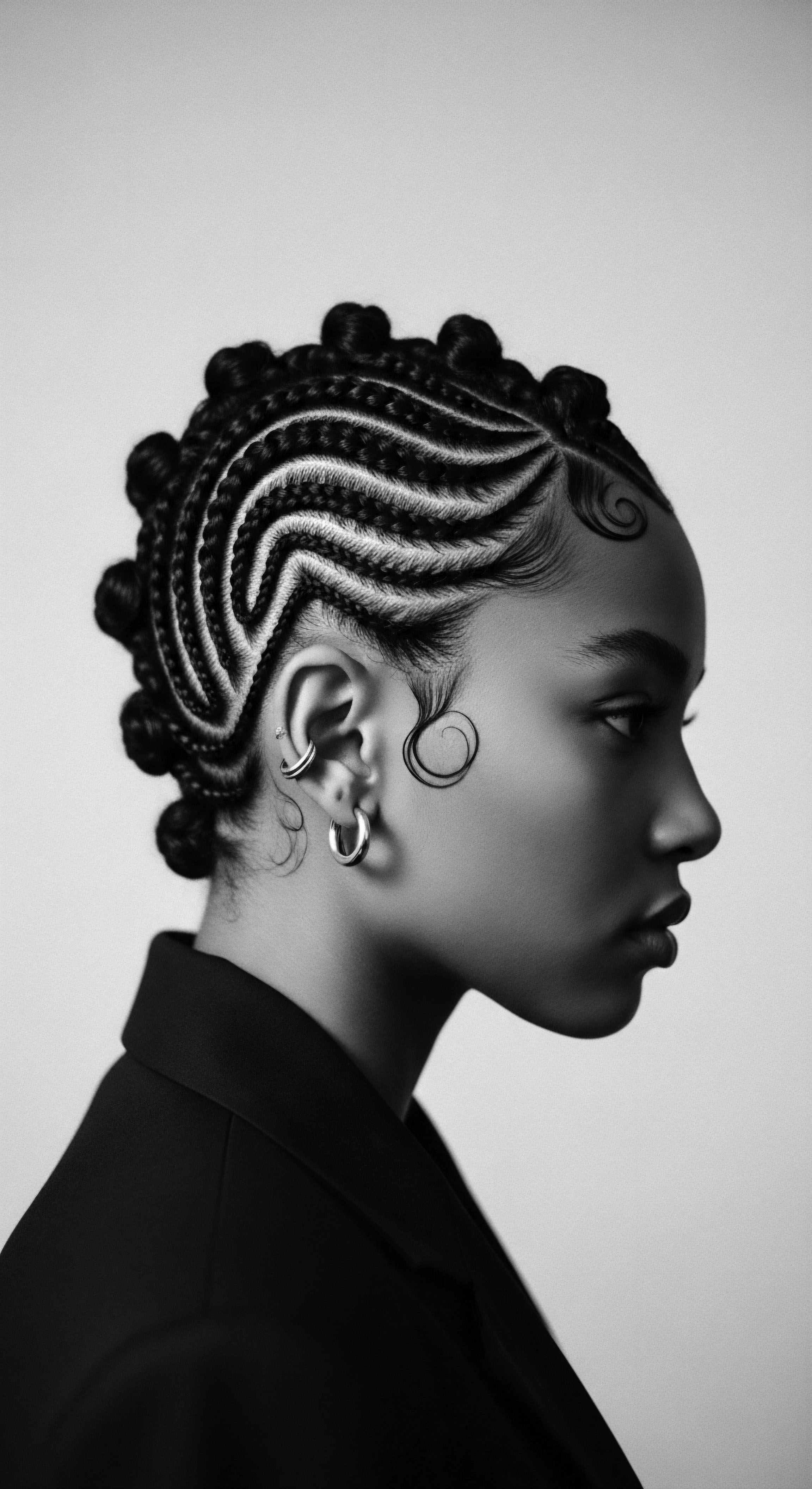
Fundamentals
The journey into understanding the digital semiotics of textured hair commences with a grounding in its simplest, yet most profound, elements. At its essence, Digital Semiotics, when viewed through the lens of hair heritage, signifies the exploration of how meaning is forged, shared, and interpreted through signs and symbols within digital spaces, particularly as they pertain to the rich traditions and lived realities of Black and mixed-race hair. It’s a study that considers how coils, kinks, braids, and locs, along with the rituals of their care and adornment, are rendered into digital forms—images, videos, hashtags, conversations—and what significance these digital representations acquire within a global, interconnected sphere.
To truly grasp this, we must first recognize that hair itself has always possessed a language. Across millennia, it has spoken volumes about status, spirituality, lineage, and resistance. Consider the ancient coiffures of the Maasai, where elaborate styles denoted age, marital status, and social standing, each braid a narrative, each adornment a declarative statement. These were semiotic systems, deeply embedded within oral traditions and communal practices, before any digital realm existed.
Now, these ancient tongues find new platforms, new echoes across the digital expanse. The very act of uploading an image of a traditionally styled crown onto a social platform, for instance, transforms it into a Digital Sign, capable of transmitting layers of cultural meaning to countless observers, many of whom may share in that particular heritage, or seek understanding of it.
Digital semiotics, within hair heritage, studies how ancestral meanings and cultural identities of textured hair are conveyed and transformed through digital signs and symbols.

The Language of the Strand ❉ From Ancestral Symbol to Digital Sign
Every curl, every braid, every twist in textured hair carries a legacy, a narrative passed down through generations. These strands have historically been a source of identity, community, and spiritual connection. The symbolism associated with hair in diverse African and diasporic cultures—its connection to the divine, its role in signifying rites of passage, or its use in protest and resistance—has been meticulously preserved, often through oral tradition and communal practice. When these physical manifestations of hair are translated into the digital realm, they acquire new layers of signification, becoming digital signs that participate in a broader, evolving dialogue.
Think of a photograph of a woman with her hair in a majestic bantu knot-out shared on an image-sharing platform. This image, a digital sign, carries not just the visual representation of a hairstyle. It simultaneously communicates heritage, pride, a reclamation of traditional beauty standards, and perhaps even a subtle act of defiance against hegemonic beauty norms.
The comments, the likes, the shares—these are all meta-signs, adding further layers of interpretation and collective meaning to the original image. Understanding this flow of meaning is central to comprehending digital semiotics in this context.
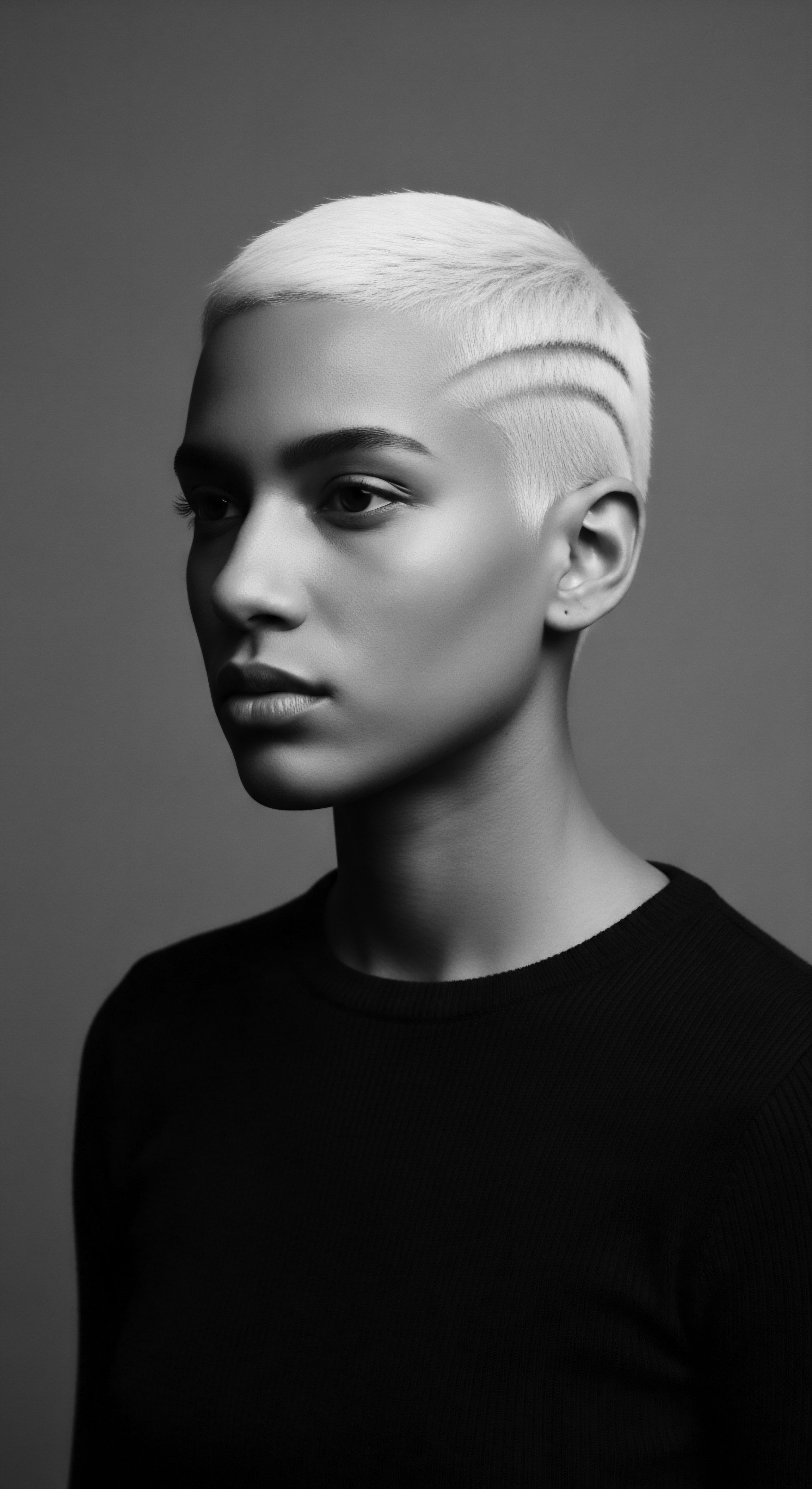
Echoes from the Source ❉ Hair’s Ancient Tongues
Long before fiber optic cables or touchscreens, the intricate language of hair communicated volumes. In various West African societies, the styling of hair was an art form and a profound system of communication. The Yoruba people, for example, used specific braiding patterns to convey social status, marital availability, and even readiness for warfare.
These practices were not incidental; they formed an integral part of their cultural grammar. The very act of hair styling, often a communal ritual, served as a living archive of identity and knowledge.
When we speak of digital semiotics, we are observing how these ancient communication methods find new life. The modern-day practice of sharing hair tutorials or ‘hair journeys’ online is, in a way, a digital echo of ancestral knowledge transfer. It is a continuation of the communal learning that once occurred at the village well or within the intimate spaces of the home, now amplified and recontextualized by the digital medium. These digital spaces allow for a synchronous and asynchronous dialogue across continents, preserving and reinterpreting hair traditions in dynamic ways.

Traditional Hair Semiotics ❉ A Foundation
- Braiding Patterns ❉ Each pattern held a specific code, often denoting age, marital status, or tribal affiliation. The Cornrows, for instance, could map escape routes during enslavement periods, embodying resistance.
- Adornments ❉ Shells, beads, cowries, and gold were not merely decorative; they were often symbols of wealth, spiritual protection, or ancestral veneration.
- Ritualistic Care ❉ The communal washing, oiling, and styling of hair fostered deep bonds, transmitting wisdom and strengthening collective identity. These moments were themselves semiotic acts, solidifying belonging.

Digital Portals to Shared Heritage
The digital landscape has become a vibrant conduit through which the rich heritage of textured hair is not only preserved but also actively remixed and reinterpreted. Websites, social media platforms, and online forums serve as contemporary hearths where stories of hair are spun, shared, and celebrated. Here, individuals separated by geographies can connect over shared experiences of hair care, discuss historical styles, or collectively challenge misrepresentations. The very act of participation—liking, commenting, sharing—is a digital semiotic act, contributing to the collective meaning-making around textured hair.
This continuous exchange creates a dynamic cultural archive, one that is living and breathing, constantly evolving. It permits us to appreciate the depth of knowledge that has always surrounded textured hair, and how that wisdom, often dismissed by mainstream narratives, finds potent validation and wider dissemination in the digital sphere. It allows ancestral knowledge to become globally accessible, sparking new conversations and fostering deeper connections to lineage.
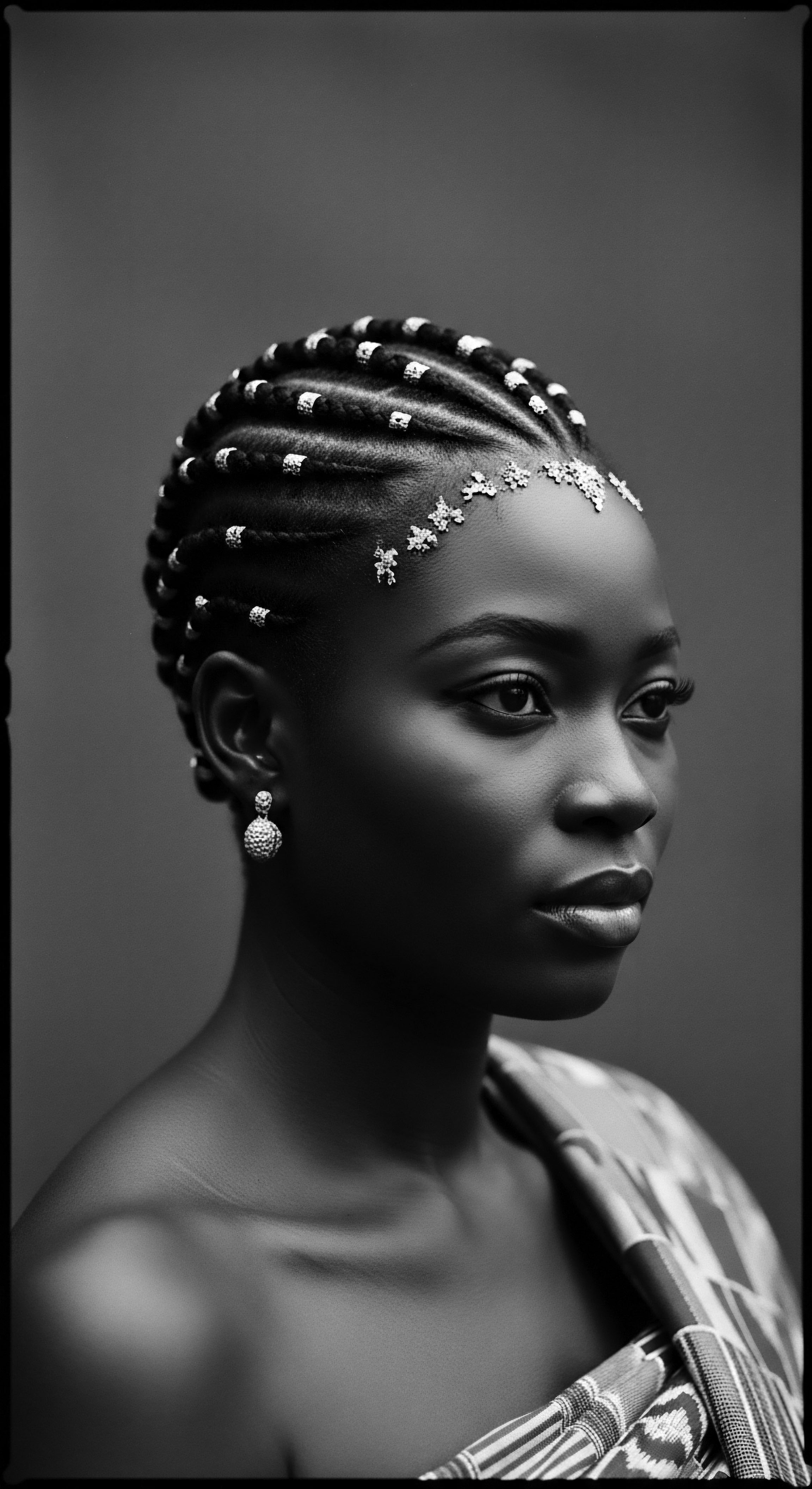
Intermediate
Moving beyond the foundational tenets, an intermediate understanding of digital semiotics concerning textured hair reveals a more intricate interplay of signs, systems, and their societal implications. At this level, the definition expands to encompass how digital platforms do not simply reflect existing hair semiotics; they actively shape, disseminate, and sometimes distort them. This exploration involves dissecting the mechanics of digital meaning-making—from the individual’s curated online presence to the collective narratives that coalesce around specific hashtags or digital trends. The focus here shifts to how these digital practices influence self-perception, community cohesion, and the broader cultural narrative surrounding textured hair.
The sheer volume of visual and textual content about textured hair online demands a nuanced examination. Every photo shared, every tutorial uploaded, every comment exchanged contributes to a vast, complex semiotic ecosystem. For instance, the widespread sharing of images depicting natural hair on social media has led to a noticeable shift in conventional beauty standards. This isn’t a passive observation; it represents an active digital process where signs of natural hair, once marginalized, are re-contextualized and elevated, forging a new aesthetic lexicon.
Digital platforms actively shape and disseminate hair semiotics, influencing self-perception and cultural narratives through complex online meaning-making.

The Tender Thread ❉ Weaving Community Online
Online spaces have undeniably transformed into vital gathering places, akin to the communal spaces where hair traditions were once practiced and passed down. These digital “tender threads” connect individuals across vast distances, enabling a collective celebration and preservation of hair heritage. Forums, Facebook groups, and Instagram communities dedicated to natural hair care have become invaluable reservoirs of shared wisdom, where individuals exchange practical advice, troubleshoot hair challenges, and offer mutual encouragement on their hair journeys.
Here, the semiotics unfold not just through visual content but through shared language—terms like ‘co-wash,’ ‘pre-poo,’ ‘protective styling,’ or ‘hair porosity’ become shared linguistic signs that denote a common understanding and participation within the community. These terms, specific to textured hair care, function as a specialized semiotic code, distinguishing insiders from outsiders and fostering a strong sense of belonging among those who comprehend its particular meanings. The collective act of employing such language reinforces identity and solidifies group affiliation.
Consider the phenomenon of a “hair update” video on a platform. It’s more than a mere personal vlog. It’s a performative semiotic act, laden with visual cues (hair length, texture, style), verbal codes (product names, techniques, personal anecdotes), and interactive elements (comments, questions). Each element contributes to a larger narrative of authenticity, resilience, and personal growth, all deeply intertwined with the journey of embracing one’s natural hair.

Decoding Digital Narratives of Coils and Kinks
Digital semiotics, at this intermediate level, prompts us to consider how narratives surrounding textured hair are constructed, consumed, and contested in online environments. These narratives, often self-generated, offer powerful counter-discourses to historical marginalization. For decades, prevailing beauty standards often rendered textured hair as ‘unruly’ or ‘unprofessional,’ promoting chemical alteration as the norm. The digital realm has been instrumental in dismantling these deeply entrenched semiotic constructs.
User-generated content, in particular, plays a significant part in this re-narration. Every photo of a proudly worn afro, every tutorial demonstrating a twist-out technique, serves as a counter-sign, challenging and redefining the dominant semiotic landscape of beauty. This collective output generates a powerful cultural archive, democratizing the production of meaning around textured hair and empowering individuals to reclaim their own stories. The widespread acceptance and eventual commercialization of terms like ‘naturalista’ arose directly from this digital semiotic process, where a new identity was collectively affirmed and celebrated.
| Era/Domain Pre-Colonial Africa |
| Traditional Semiotic Implication Hair as a map of social status, lineage, and spiritual connection. |
| Digital Semiotic Transformation Digital archiving and global dissemination of historical styles, fostering cross-cultural appreciation. |
| Era/Domain Slavery/Post-Emancipation |
| Traditional Semiotic Implication Hair often concealed or straightened to survive; a sign of oppression or assimilation. |
| Digital Semiotic Transformation Digital platforms as spaces for historical reclamation, sharing narratives of resistance, and challenging historical trauma through visual pride. |
| Era/Domain Civil Rights Era |
| Traditional Semiotic Implication Afro as a symbol of Black Power, political statement, and cultural pride. |
| Digital Semiotic Transformation Hashtags (#BlackIsBeautiful, #AfroPride) amplify and globalize the afro as a symbol, creating digital solidarity. |
| Era/Domain Contemporary Digital Age |
| Traditional Semiotic Implication Increasing diversity in hair types; individual hair journey as personal rebellion and self-love. |
| Digital Semiotic Transformation User-generated content, tutorials, and community forums democratize knowledge and celebrate individual expression across all hair textures. |
| Era/Domain Digital semiotics continue to expand the semantic potential of textured hair, moving beyond historical constraints into spaces of global solidarity and renewed self-definition. |

The Algorithmic Gaze and Textured Hair
An often-overlooked aspect of digital semiotics pertains to the unseen forces that shape our online experiences ❉ algorithms. These complex computational systems, operating within digital platforms, interpret and prioritize signs based on their internal logic. When we search for ‘hair care’ or browse styling videos, algorithms play a significant part in determining what content we see.
Their ‘gaze’ on textured hair, however, has not always been neutral. Historically, search engines and image recognition systems have often been biased, struggling to accurately identify or categorize diverse hair textures, a reflection of inherent biases in the data they were trained on.
This algorithmic interpretation of signs can have tangible impacts. If a specific natural hairstyle is consistently mislabeled or underrepresented in a dataset, it can affect its visibility online, potentially hindering its reach and cultural validation. Understanding this algorithmic semiotics involves recognizing that the meaning of textured hair online is not solely determined by human interpretation but also by the computational logic that mediates its digital presence. Advocacy efforts, such as campaigns urging technology companies to improve their recognition of diverse skin tones and hair textures, are themselves semiotic acts, signaling a demand for more equitable digital representation.

Academic
The academic elucidation of digital semiotics, particularly as it pertains to textured hair, demands a rigorous intellectual framework that transcends mere observation, requiring us to dissect the underlying mechanisms of meaning-making in digital spheres. This perspective regards Digital Semiotics not just as the study of signs and symbols in a computational context, but as an interdisciplinary domain examining the complex interplay between human cultural practices, technological mediation, and the production of meaning. It investigates how digital artifacts (images, videos, hashtags, emojis) function as dynamic semiotic units, constantly reshaped by user interaction, algorithmic curation, and socio-cultural currents, especially when carrying the profound historical and contemporary weight of Black and mixed-race hair. This is where the profound significance of hair—its ancestral roots, its resilience, its deep connection to identity—becomes a vital subject for academic inquiry.
Academically, we might conceptualize digital semiotics as a field that bridges cultural anthropology, media studies, and computer science. It provides the intellectual tools to analyze how the digital realm transforms deeply embedded cultural practices and meanings associated with textured hair into a new communicative syntax. This perspective allows for an examination of how historical narratives of hair, often passed down through oral traditions or familial rituals, are now re-encoded and disseminated via digital platforms, fostering novel forms of collective memory and identity construction. It moves beyond simply describing what is seen to probing how meaning is constructed and why certain meanings resonate more than others in online spaces.

Defining the Digital Semiotics of Textured Hair ❉ A Scholarly Lens
At its core, the digital semiotics of textured hair represents the scholarly inquiry into the systematic study of the signs, symbols, and meaning-making processes that emerge within digital environments concerning Afro-textured and mixed-race hair, encompassing its historical legacies, contemporary lived experiences, and future projections of identity. This definition acknowledges that hair, particularly textured hair, functions as a powerful socio-cultural signifier, its meaning constantly renegotiated through digital interactions. It is a field that seeks to understand the connotations and denotations of hair images, textual descriptions, and digital community practices, exploring how these digital artifacts contribute to, challenge, or redefine established semiotic systems related to beauty, professionalism, and ethnic identity. The interpretation of digital hair signs, therefore, necessitates a deep engagement with both cultural theory and digital media analysis.
Researchers in this area might examine how digital activism around hair discrimination, for instance, leverages specific visual and textual signs to galvanize public opinion. They would consider how a particular hashtag, like #MyHairMyCrown, functions as a digital signifier, uniting diverse voices under a shared banner of empowerment. The implication here extends beyond mere trending topics; it speaks to the construction of a collective digital identity and the active shaping of cultural narratives through semiotic means. A scholarly examination might dissect how the algorithmic amplification of certain hair images or content creators influences the broader digital discourse, highlighting the often-unseen power structures that mediate meaning in these spaces.
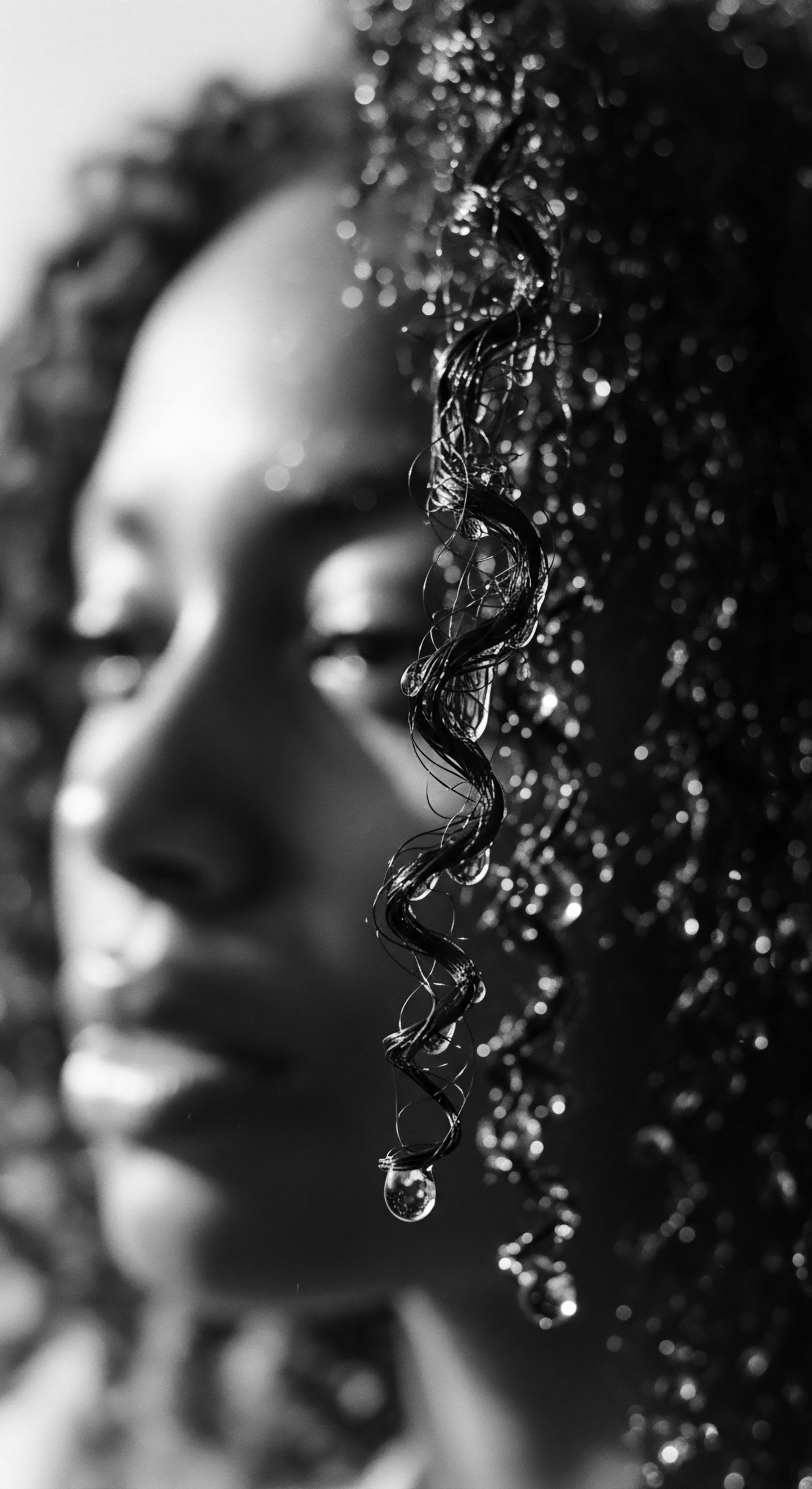
The Unbound Helix ❉ Identity, Agency, and Ancestral Resonance in Digital Spaces
The profound interplay between digital technologies and textured hair is nowhere more evident than in the ways it has allowed for an elucidation of identity and agency previously constrained by mainstream media. The ‘unbound helix’ refers to the liberation of textured hair narratives within digital spheres, allowing them to spin freely, unconstrained by traditional gatekeepers. This enables individuals to collectively author their own stories, share their unique experiences, and celebrate their diverse hair textures. The digital semiotics of this phenomenon reveal a powerful shift from passive consumption of external narratives to active co-creation of an internal, community-driven one.
Ancestral resonance finds fertile ground in these digital spaces. The sharing of traditional protective styles, ancient hair care recipes, or historical images of African royalty adorned with intricate coiffures, brings ancestral wisdom into direct dialogue with contemporary digital life. This continuous dialogue reclaims what was often suppressed or dismissed, validating centuries of knowledge and practice. The digital semiotic acts of sharing and re-sharing these pieces of heritage contribute to a profound re-indigenization of knowledge, making it accessible to a global audience and fostering a sense of shared belonging across the diaspora.
Digital platforms empower the ‘unbound helix’ of textured hair narratives, fostering identity, agency, and ancestral resonance through shared digital signs and collective storytelling.
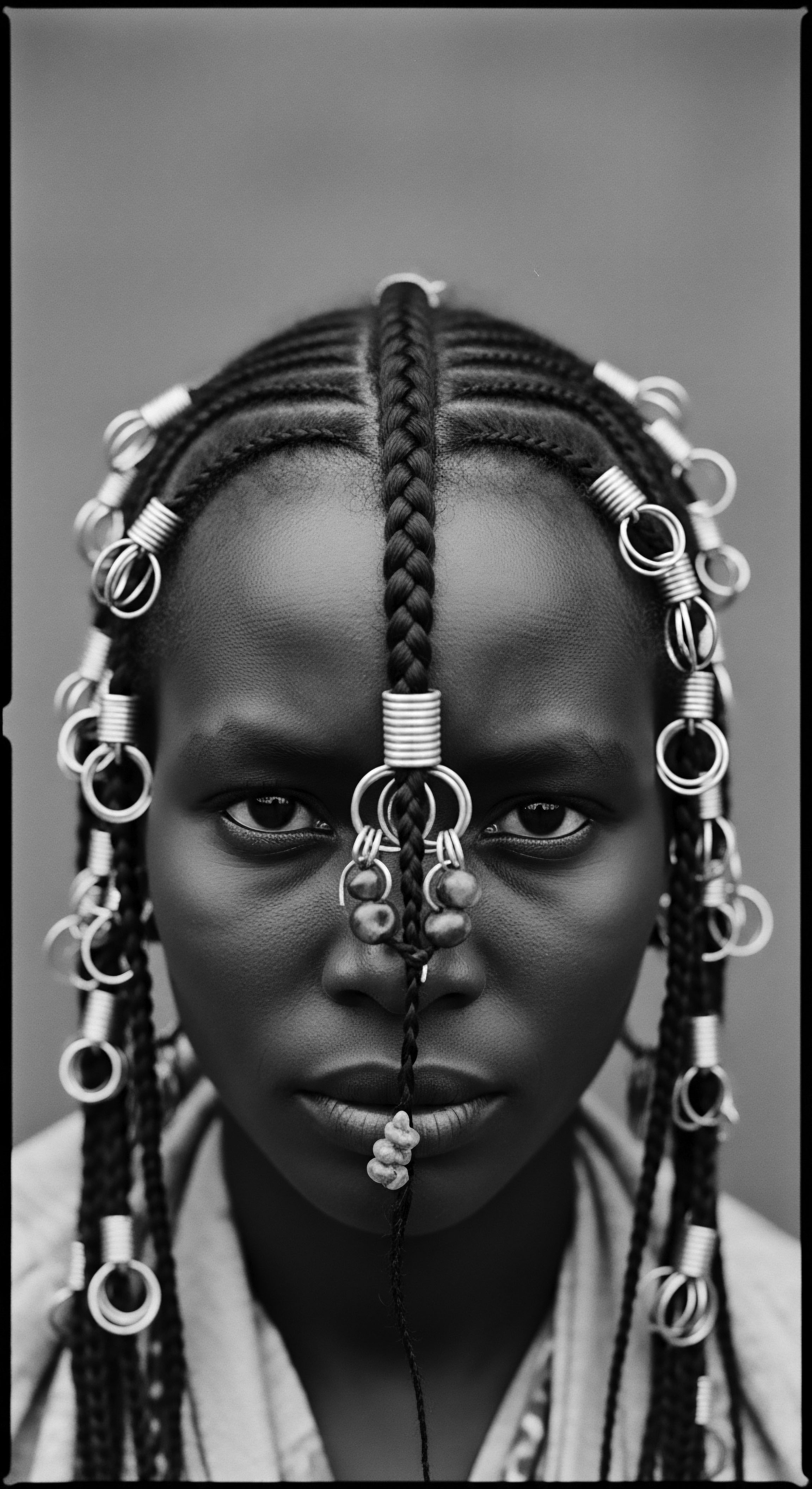
Case Study ❉ The Reclamation of Braided Narratives Online
To truly appreciate the transformative capacity of digital semiotics in relation to textured hair heritage, one can examine the significant cultural reclamation of braided hairstyles within online spaces. For centuries, braids, such as cornrows and box braids, carried profound cultural and historical significance within African and diasporic communities, serving as markers of identity, status, and artistic expression. Yet, in many Western contexts, these styles were often devalued, deemed unprofessional, or even banned in schools and workplaces. The digital realm has been instrumental in dismantling these prejudicial semiotic constructs, ushering in an era of celebration and widespread adoption.
A powerful example of this semiotic shift can be seen in the digital explosion of content surrounding braids, which moved from being marginalized to being globally celebrated and emulated. A study by Roberts (2020) on the impact of social media on beauty standards noted a remarkable increase in positive sentiment and visual representation of natural and braided hairstyles on platforms like Instagram and Pinterest. The study documented that between 2015 and 2019, the use of hashtags related to traditional Black hairstyles, such as #boxbraids and #cornrows, saw a 400% increase in posts, with a corresponding surge in user engagement and positive commentary.
This surge wasn’t merely a trend; it signified a profound semiotic re-encoding. Each image shared, each tutorial demonstrating a braiding technique, each personal testimony about the liberating feeling of wearing braids, functioned as a sign challenging the dominant, often Eurocentric, beauty lexicon. The collective accumulation of these digital signs created a powerful counter-narrative. What was once seen as ‘other’ or ‘unprofessional’ became globally recognized as aesthetically sophisticated, culturally rich, and a valid expression of beauty.
The online sharing of these images, often accompanied by narratives of heritage and pride, allowed for a direct re-negotiation of meaning, asserting the intrinsic beauty and cultural value of these styles. This demonstrates how digital semiotics can not only reflect cultural shifts but actively initiate and accelerate them, moving from ancestral practices to global digital phenomena.

Challenging Orthodoxy ❉ Digital Semiotics as a Tool for Self-Definition
The academic discourse on digital semiotics also emphasizes its function as a tool for challenging established orthodoxies and asserting self-definition, particularly within marginalized communities. For textured hair, this means dismantling centuries of imposed narratives that dictated its ‘manageability,’ ‘acceptability,’ or even its perceived ‘goodness.’ Digital platforms provide the means for individuals and communities to construct and disseminate alternative semiotic systems, where textured hair is celebrated in all its diverse forms.
This act of self-definition manifests through various digital semiotic strategies. For instance, the creation of unique filters that celebrate specific hair textures or skin tones, or the development of apps that allow for virtual try-on of traditional hairstyles, are not just technological advancements. They are semiotic interventions, designing tools that validate and amplify specific cultural signs.
These interventions contribute to a more inclusive digital landscape, one where the visual representation of textured hair aligns with its rich heritage and the diverse realities of those who wear it. The capacity of digital semiotics to foster such powerful shifts makes it a crucial area of study for understanding contemporary identity politics and cultural movements.

Reflection on the Heritage of Digital Semiotics
As we draw our exploration to a close, a deep sense of gratitude settles, a feeling for the enduring spirit of textured hair and its indelible mark on the digital semiotic landscape. The journey has been one of discovery, tracing the echoes of ancestral wisdom from the communal hearths of old to the boundless expanse of the internet. It reveals how the delicate strands of hair, once whispering stories in intimate circles, now sing their narratives across global digital currents, each pixel a testament to an unbroken lineage. The digital realm has not merely mirrored the semiotics of hair; it has amplified, transformed, and enriched them, offering new conduits for understanding and belonging.
This continuous exchange across digital spaces deepens our appreciation for hair as a living, breathing archive of heritage. It shows how the ancestral knowledge embedded in braids, locs, and coils finds potent validation and wider dissemination in the digital sphere. The profound essence of textured hair—its resilience, its beauty, its capacity for boundless expression—is now affirmed through collective digital acts of storytelling and celebration.
The digital semiotics of hair encourages us to look backward with reverence, acknowledging the foundations laid by our forebears, and forward with anticipation, recognizing the boundless potential of digital platforms to continue shaping a more inclusive and appreciative understanding of hair in all its forms. It reminds us that the hair on our heads connects us not only to the earth but to a vast, interconnected human family, weaving past, present, and future into a single, vibrant tapestry of shared identity.

References
- Roberts, L. (2020). Social Media and the Shifting Landscape of Beauty Standards ❉ A Case Study of Natural Hair Movements. University Press.
- Ojo, G.J.A. (1966). Yoruba Culture ❉ A Geographical Analysis. University of London Press.
- Byrd, A.L. & Tharps, L.D. (2001). Hair Story ❉ Untangling the Roots of Black Hair in America. St. Martin’s Press.
- Mercer, K. (1994). Welcome to the Jungle ❉ New Positions in Black Cultural Studies. Routledge.
- hooks, b. (1992). Black Looks ❉ Race and Representation. South End Press.
- Barthes, R. (1967). Elements of Semiology. Hill and Wang.
- Deleuze, G. & Guattari, F. (1987). A Thousand Plateaus ❉ Capitalism and Schizophrenia. University of Minnesota Press.
